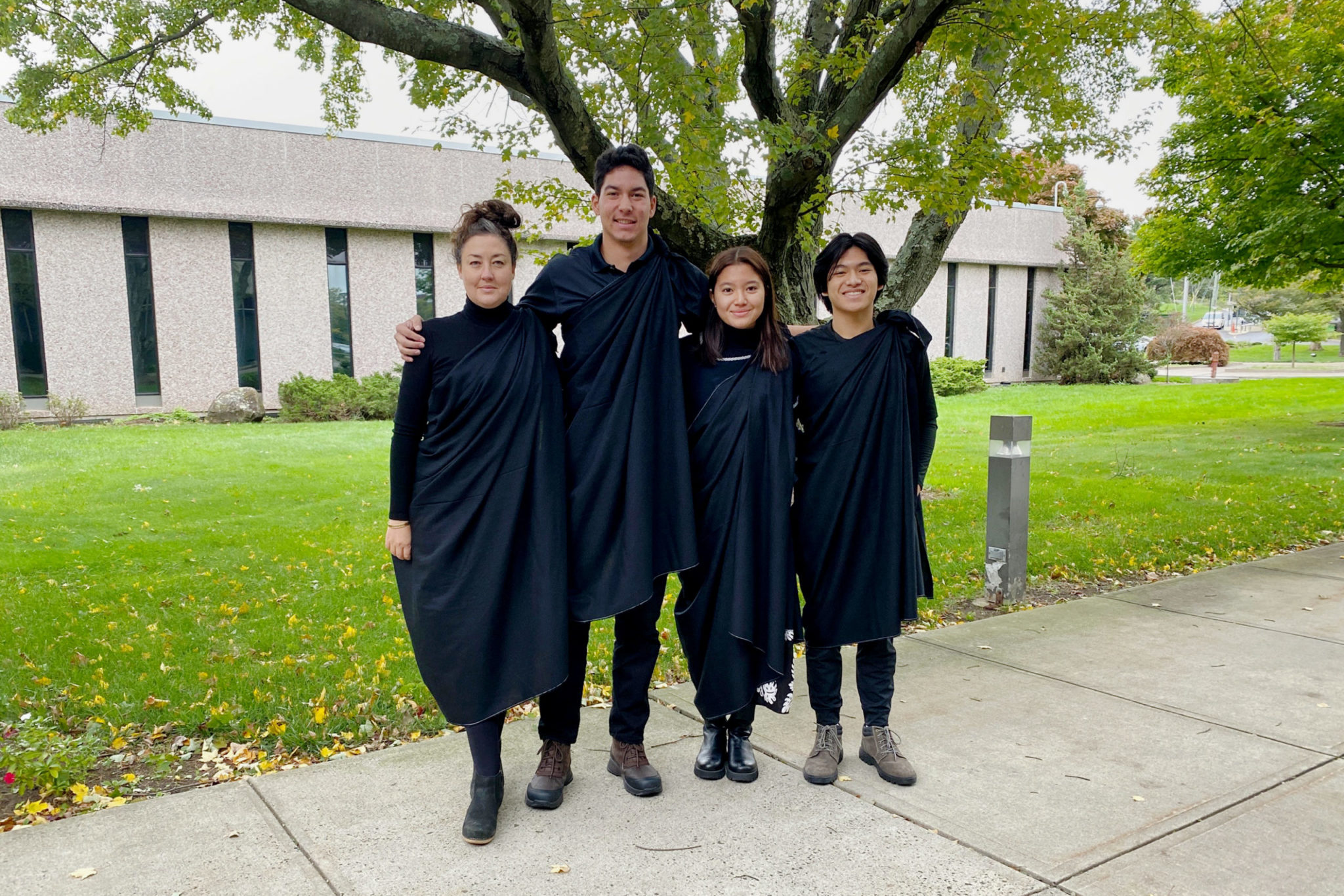Ancestral remains in Peabody Collection repatriated to Hawaii
A group of three students led by Professor Hi’ilei Hobart trained for a week and a half to repatriate ancestral remains from the Yale Peabody Collection. The students called on Yale to take a more swift and active approach to repatriating Native remains.

Courtesy of Hi’ilei Hobart
Ancestral remains being held at Yale’s Peabody Museum are being repatriated back to Hawaii.
The iwi kupuna, the Hawaiian term for ancestral bones, include a number of mandibles and teeth that had been in the Peabody’s collections since the 1870s. Then, during her first weeks at Yale, newly-arrived assistant professor of Native and Indigenous studies Hi’ilei Hobart visited the Peabody’s Pacific holdings and was told the museum housed iwi kupuna.
“My reaction was one of purpose and determination; sometimes as Indigenous people in the academy, we wonder how or what our impact can be,” Hobart told the News. “This was a tangible, do-able, and important task. I knew that there was no reason that these ancestors should be waiting a week, a year, or a decade more to go home.”
Hobart quickly contacted Edward Halealoha Ayau — an expert in repatriation who has helped return over six thousand ancestral bones to Hawaii. Ayau, she found out, had plans to visit Vassar College on Oct. 4 for a repatriation project.
If Peabody’s remains could be ready by then, Ayau said, he could take the iwi kupuna from Yale back home on the same trip. Hobart then assembled a team of Native Hawaiian students including Kala’i Anderson ’25, Connor Arakaki ’26 and Joshua Ching ’26 to carry out the repatriation process. The group trained daily for a week and a half during a busy midterm season for the Oct. 4 repatriation ceremony.
Hobart and the students met daily over Zoom with cultural practitioners Mana Caceres and Kalehua Caceres to memorize four anchor prayers — known as pule — as well as additional chants.
Arakaki said that paying attention to diacritical marks in the Hawaiian language and learning proper intonation and enunciation was particularly challenging.
“At home, I had this perception that you needed decades of education and cultural practitioning in order to do this type of work,” Arakaki said. “But here I am in a week’s worth of training, needing to do this.”
In addition to memorizing pule, the group also sewed and ironed black kihei, or traditional Hawaiian garments to wear during the ceremony.
The repatriation ceremony took place on West Campus on Oct. 4. After the ceremony, Hobart, Anderson, Arakaki and Ching drove to upstate New York to hand the iwi kupuna off to Ayau.
According to Hobart, the remains were originally part of a larger group of iwi kupuna that were intended to be returned during a repatriation in 2014 but became separated and stayed in New Haven.
Exactly how the iwi kupuna came to be separated from a larger shipment is unknown.
“As upsetting as it sounds, sometimes remains just get separated. That’s simply what happened in this case,” said Jessie Cohen, the museum’s repatriation compliance coordinator.
Nationally, thousands of ancestral remains were stolen from Hawaii and shipped to universities in the name of research during the nineteenth and twentieth centuries. Institutions are supposed to repatriate such remains under the 1990 Native American Graves Protection Act, which set up a process through which Native American and Native Hawaiian tribes can reclaim stolen human remains and sacred objects.
Typically, tribal organizations or NGOs bring their own teams to institutions to perform repatriations. According to Hobart, Tuesday was the first iwi kupuna repatriation at Yale led by members of the Yale community.
Arakaki, Ching and Anderson all expressed that they would like Yale to do more to actively and swiftly repatriate native remains in the future.
“It’s Yale’s onus to bring the bones home, and it shouldn’t have taken as many people and as many concerns raised as it did,” Arakaki said. “It makes me wonder: if there wasn’t a Native Hawaiian professor, how many bones would be repatriated? That’s a scary thought.”
Ching and Anderson both advocated for Yale to increase NAGPRA-compliance funding and hire a wider repatriation team that could work more quickly to return remains.
Currently, Cohen is the only full-time employee dedicated to NAGPRA compliance at the Peabody. Cohen considers her position — which switched from contract-based to full time when she was hired in 2019 — as evidence of Yale’s dedication to repatriation.
According to Cohen, Yale has completed the NAGPRA process for about 40% of the remains in its collection. This is roughly consistent with the national average: a 2018-2019 report to Congress found that nationally 40% of 197,283 human remains reported have completed the NAGPRA process.
Harvard came under scrutiny earlier this year when a report leaked to the Crimson revealed that the university’s collections continued to hold the human remains of 7,000 Native Americans. Officials had earlier been criticized by the national Association on American Indian Affairs for failing to consult with tribal nations in violation of NAGPRA.
For Hobart, it is important to acknowledge the historical wounds repatriation aims to heal.
“I don’t think repatriation is an opportunity for institutions to pat themselves on the back,” Hobart said. “Rather than feeling like it’s something really good, we should see it as correcting something that is very painful.”
The Peabody has repatriated iwi kupuna from its collections twice before, in 1994 and 2014.
Correction, Oct. 18: This article has been updated with the correct names of Mana Caceres and Kalehua Caceres.







